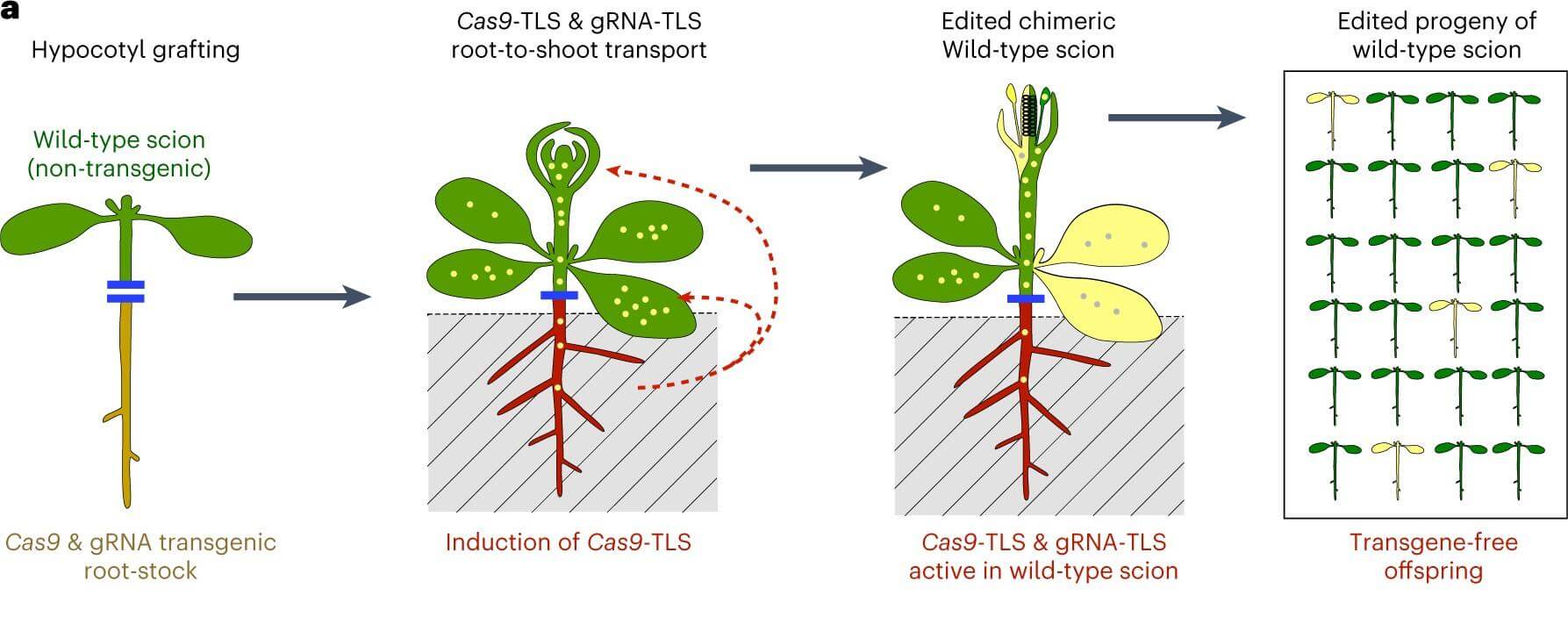Transgenic technology can carry out cross-species gene mining and utilization, realize the targeted transfer of essential functional genes, and endow organisms with specific traits to meet people's needs. However, the problems associated with transgenic technology are hard to ignore. Grafting is a non-transgenic technique that has been used for centuries in agriculture and horticulture and has also been shown to facilitate the transfer of chloroplast genomes and entire nuclear genomes between plants. Unlike sexual hybridization, grafting is not limited by species boundaries, as widely different species can be grafted. Genome editing is an efficient and precise genetic engineering technique to manipulate target genes, and it is also applicable to plants with complex genomes that are difficult to improve by conventional breeding methods.
Based on the above background, Lifeasible offers customers CRISPR/Cas-based non-transgenic grafted genome editing services, which allows heritable non-transgenic genome editing of plants. Creating stable gene-edited plant strains using CRISPR-Cas9 technology requires a lengthy heterologous crossing process to eliminate CRISPR/Cas9-associated sequences to obtain transgene-free strains. We solved the problem of creating transgene-free strains by designing the CRISPR/Cas9 system to fuse Cas9 and gRNA with a tRNA-like sequence motif that can be transferred from transgenic rootstocks to wild-type grafted strips, resulting in heritable gene editing in several varieties.
 Figure 1. Scheme of CRISPR/Cas9-mediated transgene-free gene editing by grafting. (Yang, L., et al., 2023)
Figure 1. Scheme of CRISPR/Cas9-mediated transgene-free gene editing by grafting. (Yang, L., et al., 2023)
This method includes plasmid construction, transgenic line generation, hypocotyl grafting, genomic DNA extraction, PCR detection of genome editing, phenotypic screening, and genome editing efficiency determination.
Plants obtained by this method will have superior growth characteristics influenced by similar hybridization. New chemotypes resulting from specialized metabolic combinations of two different species may also lead to increased stress tolerance, especially to biotic stresses (pathogens and pests) in plants.
The main task of gene editing in plants is to produce edited progeny free of transgenes to ensure genome stability and its application in food, feed, and other production. Lifeasible can provide customers with a simple, effective service to create heritable, non-transgenic genome edits using grafted plants. Please feel free to contact us to submit your requirements.
Reference
Lifeasible has established a one-stop service platform for plants. In addition to obtaining customized solutions for plant genetic engineering, customers can also conduct follow-up analysis and research on plants through our analysis platform. The analytical services we provide include but are not limited to the following:
Get Latest Lifeasible News and Updates Directly to Your Inbox